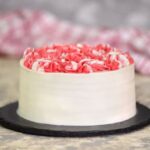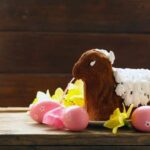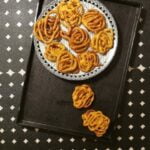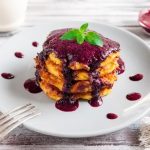Cake decorating frosting is an essential element in creating stunning designs that make cakes truly remarkable. Whether you’re a professional baker or simply enjoy trying your hand at baking, mastering the art of cake decorating frosting can elevate your creations to a whole new level.
In this article, we will explore the different types of cake decorating frosting options available and provide you with step-by-step instructions, tips, and techniques to help you create beautiful designs that are sure to impress.
When it comes to cake decoration, the frosting plays a crucial role in enhancing the overall appearance and taste of your creation. It not only adds a smooth finish but also acts as a canvas for intricate designs and decorations. From classic buttercream to silky ganache, there are various types of frosting options to choose from based on your desired texture and flavor.
To get started with cake decorating frosting, it’s important to gather all the necessary ingredients and tools. We will provide you with a comprehensive list of ingredients needed for making homemade cake decorating frosting. Additionally, we will detail the essential tools required for the process, ensuring you have everything you need before embarking on your cake decorating journey.
So whether you’re looking to create beautiful flowers using piping techniques or want to master the perfect rosettes and borders, this article will guide you through every step of the process. Get ready to unleash your creativity and learn how to make cake decorating frosting that will take your cakes from ordinary to extraordinary.
Gathering the Ingredients and Tools
When it comes to making cake decorating frosting, having the right ingredients and tools is essential. To ensure your frosting turns out perfect every time, here is a comprehensive list of ingredients you’ll need:
Ingredients:
- Butter or Shortening: These are the base for most cake decorating frostings. Unsalted butter provides a rich flavor, while shortening creates a smoother texture.
- Powdered Sugar (also known as Confectioners’ Sugar): This is the main ingredient that adds sweetness and structure to your frosting.
- Liquid: Depending on the recipe, you may need milk, heavy cream, water, or other liquids to achieve the desired consistency.
- Flavoring: Vanilla extract is a popular choice for adding flavor to cake decorating frostings, but you can also use almond extract or other flavors depending on your preference.
- Salt: A pinch of salt can enhance the overall flavor of your frosting.
In addition to the ingredients, there are a few essential tools that will make your cake decorating frosting process much easier:
Tools:
- Electric Mixer: Whether it’s a stand mixer or a handheld mixer, having an electric mixer can save you time and effort in mixing and beating your frosting.
- Mixing Bowls: It’s best to have different sizes of mixing bowls so you have options for various amounts of frosting.
- Rubber Spatula: This tool will help you scrape down the sides of your mixing bowl and ensure all ingredients are well incorporated.
- Piping Bags and Tips: If you plan on using advanced techniques like piping or creating intricate designs, having piping bags and tips in different shapes and sizes will be necessary.
By gathering these ingredients and tools ahead of time, you’ll be well-prepared to create your own delicious homemade cake decorating frosting. Remember to follow the recipe instructions carefully for optimal results.
Choosing the Perfect Foundation
When it comes to cake decorating frosting, selecting the right cake base is essential for a successful and visually appealing design. The cake base acts as the canvas for your frosting masterpiece, and different types of cakes can complement specific frosting techniques. Understanding which cake base to choose will help ensure that your frosting design shines.
One important factor to consider when selecting your cake base is its texture. Light and fluffy cakes, such as sponge or chiffon cakes, work best with delicate designs that require intricate piping or detailed decorations. These cakes have a soft crumb that allows the frosting to adhere well and create precise details.
On the other hand, denser cakes like pound or chocolate fudge cakes are better suited for more robust designs that can withstand heavier decorations or sculpted shapes. The sturdiness of these cakes provides a solid foundation for stacked or tiered cakes and allows for more creative freedom in terms of structure and design.
In addition to texture, flavor compatibility is another aspect to consider when choosing your cake base. Vanilla or butter-based cakes are versatile options that pair well with various flavors of frosting. Alternatively, chocolate cakes can be paired with chocolate ganache or cream cheese frosting for a rich and decadent combination.
Ultimately, the choice of cake base should align with your desired frosting design and personal taste preferences. Whether you opt for light and airy sponge cakes or dense and moist chocolate fudge cakes, selecting the perfect foundation sets the stage for an impressive cake decorating creation.
Suggested Cakes
| Frosting Technique | Suggested Cake Base |
|---|---|
| Piping intricate designs | Sponge or chiffon cake |
| Stacked or tiered cakes | Pound or chocolate fudge cake |
| Fondant-covered cakes | Dense and moist cakes like chocolate or carrot cake |
| Sculpted shapes | Dense, sturdy cakes like pound or red velvet cake |
Mastering the Basics
When it comes to cake decorating, having a delicious and versatile homemade frosting recipe is a must. Whether you’re a beginner or an experienced baker, mastering the basics of cake decorating frosting recipes is essential for creating stunning designs. In this section, we will share three tried-and-true recipes that will elevate your cake decorating game and impress your guests.
Recipe 1: Classic Buttercream Frosting
One of the most popular and versatile frosting recipes is classic buttercream. It’s smooth, creamy, and can be easily flavored and colored. To make this recipe, you will need:
- 1 cup unsalted butter, softened.
- 4 cups powdered sugar.
- 2 teaspoons vanilla extract.
- 2 tablespoons milk.
To prepare the classic buttercream frosting:
- In a mixing bowl, beat the softened butter until creamy.
- Gradually add powdered sugar and continue beating until well combined.
- Add vanilla extract and milk, and beat on medium speed until light and fluffy.
- If desired, add food coloring or flavor extracts for additional customization.
Recipe 2: Cream Cheese Frosting
Cream cheese frosting adds a tangy sweetness to cakes that complements various flavors such as red velvet or carrot cake. Here are the ingredients you’ll need:
- 8 ounces cream cheese, softened.
- ½ cup unsalted butter, softened.
- 4 cups powdered sugar.
- 2 teaspoons vanilla extract.
To prepare cream cheese frosting:
- In a mixing bowl, beat the cream cheese and butter together until smooth.
- Gradually add powdered sugar while continuing to beat.
- Add vanilla extract and beat until light and fluffy.
- Remember to refrigerate this frosting as cream cheese can soften quickly.
Recipe 3: Chocolate Ganache
For chocolate lovers, a rich ganache is a perfect choice. It can be used as a frosting or a glaze, depending on its consistency. Here’s what you’ll need:
- 8 ounces semisweet chocolate.
- 1 cup heavy cream.
To prepare chocolate ganache:
- Chop the chocolate into small, uniform pieces and place it in a heatproof bowl.
- Heat the heavy cream in a saucepan over medium heat until it simmers. Remove from heat.
- Pour the hot cream over the chopped chocolate and let it sit for a minute to melt.
- Stir gently until smooth and shiny. Allow the ganache to cool slightly before using it as a frosting or pouring it as a glaze.
These homemade cake decorating frosting recipes are just the beginning of your journey towards creating beautifully decorated cakes. Experiment with different flavors, colors, and techniques to add your unique touch to each creation. Remember, practice makes perfect, so don’t be afraid to try new things and unleash your creativity in cake decoration.
Achieving Different Consistencies
One of the key factors in successful cake decorating is achieving the right consistency of frosting. The texture of your frosting can greatly impact the outcome of your design, so it’s essential to learn how to adjust it according to your needs.
Depending on the technique you’re using and the design you want to achieve, you may need stiff, medium, or soft frosting. In this section, we will explore different methods for adjusting your frosting texture and offer tips to help you personalize it based on your preferences.
To achieve a stiff consistency frosting that holds its shape well for intricate designs like flowers and piped decorations, you can add more powdered sugar to the recipe. Gradually incorporate additional powdered sugar until the desired stiffness is achieved. Keep in mind that adding too much powdered sugar can make the frosting overly sweet and difficult to work with, so be mindful of balancing sweetness and stiffness.
On the contrary, if you want a softer texture for techniques like spreading or making smooth finishes, you can add small amounts of liquid such as milk or cream. Start by adding a teaspoon at a time and mix well until you reach the desired softness. Just remember not to add too much liquid too quickly as it can make the frosting runny and cause the design to lose its shape.
Another method for adjusting frosting consistency is by incorporating shortening or butter into your recipe. Adding small amounts of either ingredient can help create a smoother and more spreadable texture for cake filling or crumb coat application. It’s important to note that using shortening might result in a slightly less creamy taste compared to using butter.
| Frosting Consistency | Adjustment Method |
|---|---|
| Stiff | Add more powdered sugar |
| Medium | Use the base recipe or adjust as needed |
| Soft | Add small amounts of liquid (milk or cream) |
| Smooth and Spreadable | Incorporate shortening or butter into the recipe |
By learning how to adjust your frosting texture, you can have more control over your cake decoration process. Remember to practice and experiment with different consistencies to find the perfect balance for your designs. The ability to personalize your frosting texture will allow you to unlock endless creative possibilities in decorating stunning cakes.
Leveling Up Your Designs
Piping
One of the most popular advanced cake decorating techniques is piping. Piping involves using a piping bag fitted with a decorating tip to create intricate designs and patterns on the cake. To master this technique, start by selecting the appropriate tip for your desired design.
A round tip is great for creating lines, dots, and writing, while a star tip can be used to make rosettes and borders. Fill the piping bag with your prepared frosting and apply gentle pressure to create steady lines or decorative shapes on the cake.
Rosettes
Rosettes are beautiful flower-like decorations that can bring a touch of elegance to any cake design. To create rosettes, you will need a large open star tip. Begin by holding the piping bag perpendicular to the surface of the cake and applying steady pressure while moving in a circular motion from the center outwards. Continue piping layers of rosettes until you achieve the desired effect. Experiment with different colors and sizes of rosettes to add dimensionality to your cake.
Borders
Borders are an essential component of cake decoration that add a polished finish to your design. They can be created using various techniques such as shell borders, rope borders, or ruffle borders. For example, to make a shell border, use a small round or star tip and pipe small shells continuously along the edge of the cake.
To create a rope border, use a medium-sized round tip and pipe continuous lines in a wavy motion around the perimeter of the cake. Borders not only enhance the overall appearance but also provide an opportunity to incorporate complementary colors into your design.
Flowers
The addition of edible flowers can transform an ordinary cake into an extraordinary masterpiece. There are numerous techniques for creating floral decorations such as buttercream flowers or fondant flowers. To pipe buttercream flowers, use different petal tips to create various flower shapes like roses, daisies, or tulips.
Pipe the petals onto a flower nail and then transfer them onto the cake using a small spatula. Additionally, fondant can be molded and shaped into intricate flower designs that provide a more delicate and realistic appearance.
Mastering these advanced cake decorating techniques can take time and practice, but with patience and perseverance, you can elevate your cake designs to the next level. Remember to start with simple designs before attempting more complex ones and don’t be afraid to experiment with colors, textures, and patterns. With these techniques in your arsenal, you’ll be able to create stunning cakes that will impress friends, family, and customers alike.
Adding a Touch of Color
When it comes to cake decorating, adding color to your frosting can take your creations to the next level. Whether you want to create a vibrant princess-themed cake or pastel-colored cupcakes for a baby shower, coloring your frosting allows you to customize your designs and make them truly eye-catching. In this section, we will explore different methods of coloring your cake decorating frosting and provide tips on achieving the perfect shades.
There are several options for coloring your cake decorating frosting, depending on the desired effect and preferences. Gel colors are often a popular choice as they are highly concentrated, allowing you to achieve intense hues with just a small amount. Natural food coloring is another option for those who prefer using ingredients derived from natural sources. By using ingredients like beet powder or matcha powder, you can add color without any artificial additives.
To achieve vibrant shades with gel colors or natural food coloring, start with a small amount and gradually add more until you reach the desired intensity. Remember that it’s easier to add more color than to remove it, so start with a conservative amount and adjust as needed.
For pastel shades, use less coloring or dilute the gel colors or natural food coloring with water before adding them to the frosting. This will result in softer tones that work well for delicate designs and lighter themes.
Additionally, cocoa powder can be used to naturally color frosting various shades of brown. This is especially useful when creating chocolate-flavored frostings. Depending on the richness of cocoa flavor desired, vary the amount of cocoa powder added while incorporating it into the frosting mixture.
When mixing colors together to create custom shades, remember that it’s best to mix separate batches rather than trying to blend two different colors directly into one batch of frosting. Mixing two previous colors together may result in an unwanted muddy hue rather than the vibrant shade you were hoping for.
Experimenting with different colors and shades can be a fun and creative aspect of cake decorating. Don’t be afraid to try various combinations and techniques to achieve the perfect coloring for your frosting. Remember, the sky’s the limit when it comes to creating visually stunning and delicious cakes.
Storing and Preserving Your Cake Decorating Frosting
When it comes to making cake decorating frosting, it is essential to know how to store and preserve it properly. Proper storage ensures that your frosting remains fresh and of high quality for future use. Here are some best practices for storing and preserving your homemade cake decorating frosting:
- Refrigeration: Most cake decorating frostings can be stored in the refrigerator. Place the frosting in an airtight container or cover it tightly with plastic wrap before refrigerating. This helps to prevent any contaminants from affecting the taste and texture of the frosting. When ready to use, allow the refrigerated frosting to come to room temperature before using or rebeating it to restore its smooth consistency.
- Freezing: If you have leftover frosting or want to make a big batch in advance, freezing is a great option for long-term storage. Ensure that the frosting is in an airtight container or heavy-duty freezer bag with all excess air removed before freezing. Label the container with the date so that you can keep track of its freshness.
- Thawing: When you are ready to use frozen frosting, transfer it from the freezer to the refrigerator and let it thaw overnight. Once completely thawed, bring the frosting back to room temperature before rebeating or using it on your cakes.
- Quality Control: It’s important to note that some types of frostings may not be suitable for freezing, as they may separate or become grainy after thawing. For example, cream cheese-based frostings tend to have a different texture when frozen and thawed. Therefore, always consider the specific type of frosting you are working with when deciding on storage methods.
By following these tips, you can ensure that your homemade cake decorating frosting stays fresh for as long as possible and maintains its delicious taste and smooth texture when used in future creations. With proper storage techniques, you can easily preserve your frosting and always have it on hand whenever you need it.
Remember, the key to successful cake decorating is practice and creativity. So don’t be afraid to experiment with different frosting techniques and unleash your creativity in cake decoration. With the right foundation, a mastery of basic recipes, knowledge of advanced techniques, and an understanding of color options, you can create stunning designs that will wow your friends and family. Enjoy your cake decorating journey.
Conclusion
In conclusion, cake decorating frosting is an essential component in creating stunning designs on cakes. Throughout this article, we have explored the different types of cake decorating frosting options available, and provided comprehensive lists of ingredients and tools needed for the process. We have discussed the importance of selecting the right cake base for your frosting design, and offered suggestions for different types of cakes that work well with specific techniques.
Furthermore, we have shared tried-and-true recipes for making homemade cake decorating frosting, along with step-by-step instructions and tips. We have also taught readers how to achieve different consistencies of frosting based on their design needs, and provided techniques and tips for altering frosting texture based on personal preference.
Additionally, we have highlighted advanced cake decorating frosting techniques such as piping, rosettes, borders, and flowers. Detailed instructions, visuals, and troubleshooting tips were included to help readers level up their designs. We also educated readers about different coloring methods for their frosting and guided them on achieving vibrant or pastel shades with color mixing tips.
Lastly, we discussed best practices for storing and preserving cake decorating frosting to maintain its quality and freshness for future use. With all these techniques and knowledge at hand, it is time to unleash your creativity in cake decoration. Experimenting with different frosting techniques will allow you to create unique designs that are sure to impress your friends and family.
So go ahead – grab your ingredients and tools, choose your perfect foundation, master the basics, achieve different consistencies, level up your designs with advanced techniques, add a touch of color to your creations – all while storing your frosting properly for future use. Get ready to create cakes that are not only delicious but visually stunning as well.
Frequently Asked Questions
What kind of frosting do you use for cake decorating?
When it comes to cake decorating, there are several different types of frosting that can be used. One popular choice is buttercream frosting, which is made by combining butter, powdered sugar, and flavorings such as vanilla extract. This type of frosting is versatile and can be easily colored with food coloring for vibrant designs.
Another option is fondant, which is a smooth and pliable icing that can be rolled out and draped over the cake for a seamless finish. Ganache, a mixture of melted chocolate and cream, is also commonly used for cake decorating as it provides a rich and glossy appearance.
How to make a cake frosting at home?
Making cake frosting at home is relatively simple and allows you to customize the flavors according to your preference. The most basic recipe for homemade cake frosting involves combining softened butter, powdered sugar, milk or cream, and vanilla extract in a mixing bowl. Beat the ingredients together until they reach a smooth and creamy consistency.
This can be achieved using either an electric mixer or by hand with a whisk if you prefer a good arm workout! Adjusting the amount of powdered sugar or liquid will allow you to achieve the desired thickness and sweetness of the frosting.
What is the best frosting for piping flowers?
When it comes to piping flowers on cakes, the best frosting to use is buttercream or royal icing. Buttercream icing offers a balance between softness and stability, making it suitable for intricate flower designs with fine details. It allows for smooth piping while holding its shape well once piped onto the cake surface.
Royal icing is another excellent option for piping flowers as it dries hard and can create delicate petals with defined edges. Its unique texture makes it ideal for creating more intricate flower decorations that require precision in their design. Ultimately, both buttercream and royal icing provide great results when it comes to piping flowers on cakes — the choice depends on personal preference and the effect you wish to achieve.

Welcome to my blog about home and family. This blog is a place where I will share my thoughts, ideas, and experiences related to these important topics. I am a stay-at-home mom with two young children. I hope you enjoy reading it! and may find some helpful tips and ideas that will make your home and family life even better!





